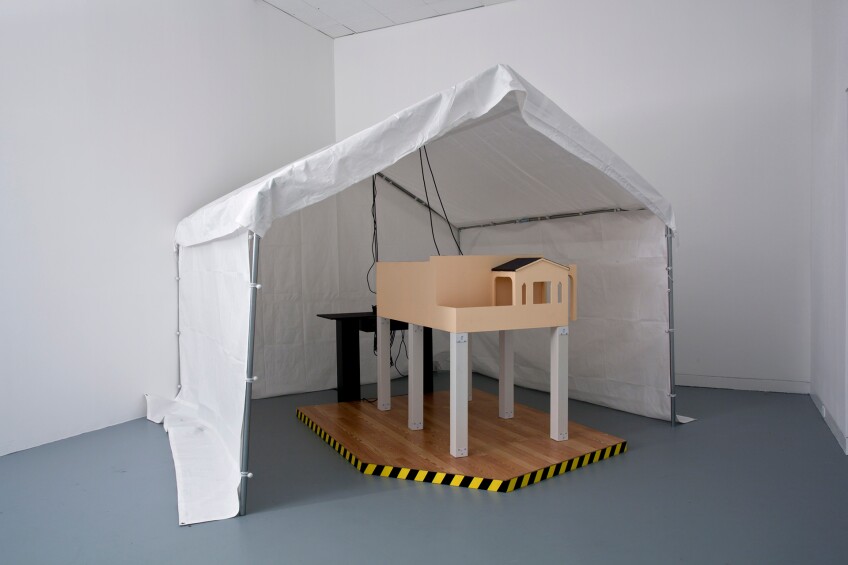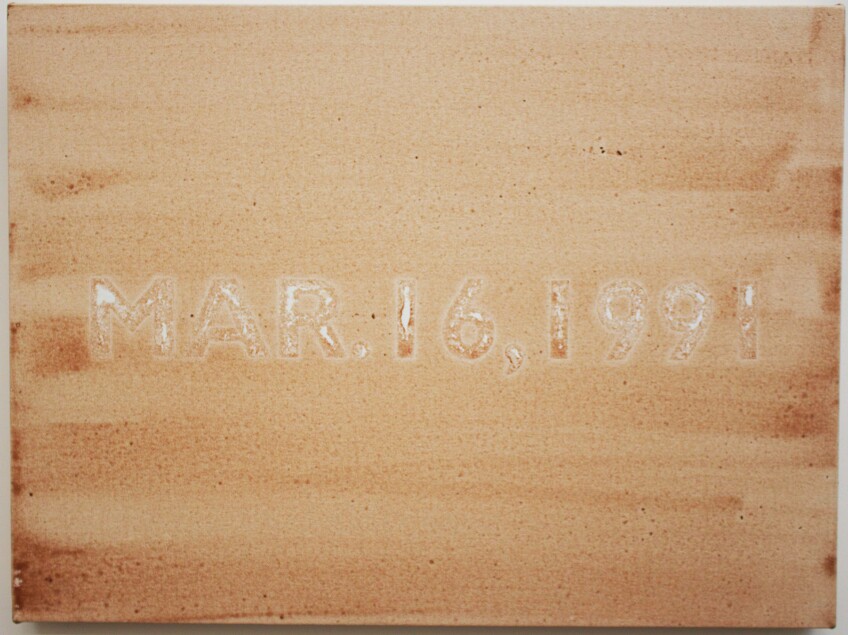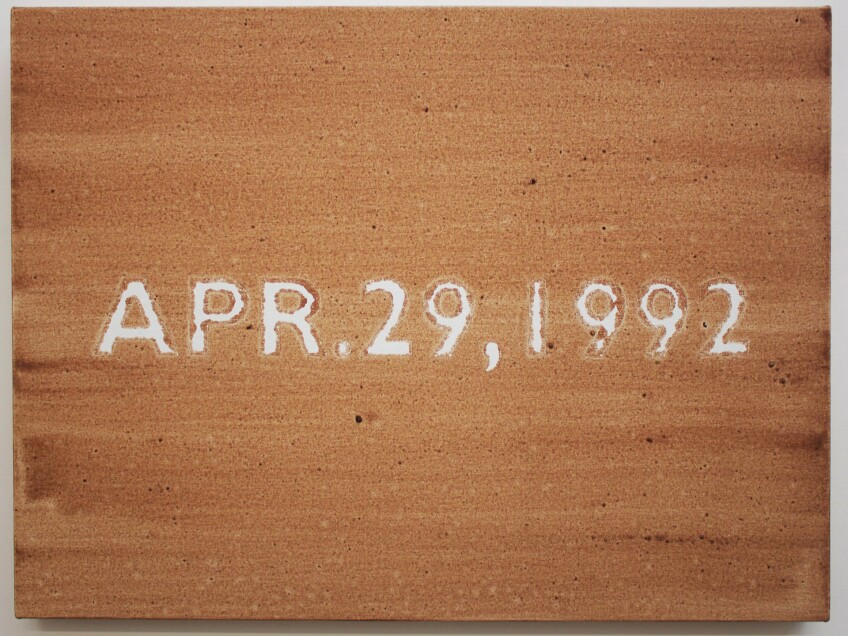Black and Blue and Brown: Artists Depict Police Brutality

After nearly thirty years of struggle and continued efforts to be more inclusive and diverse, the country is once again in the throes of unrest, clamoring for real change. As the nation strives for answers and ways forward in the wake of George Floyd’s death, it is helpful to look back. How did we get here? How can we help make lasting changes? Read on to learn more.
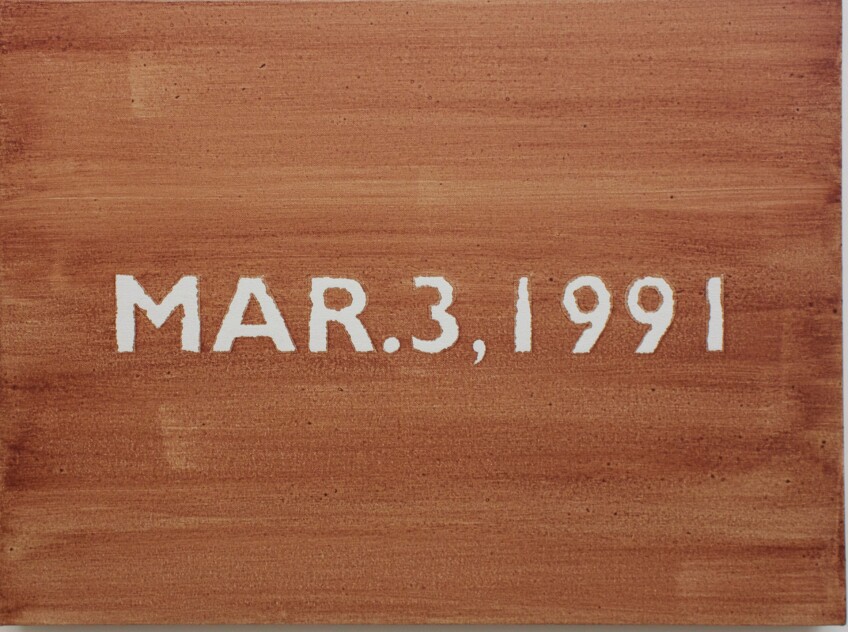
In partnership with the Vincent Price Art Museum: The mission of the Vincent Price Art Museum is to serve as a unique educational resource through the exhibition, interpretation, collection, and preservation of works in all media.
"Tastemakers & Earthshakers: Notes from Los Angeles Youth Culture, 1943 – 2016" is a multimedia exhibition that traverses eight decades of style, art, and music, and presents vignettes that consider youth culture as a social class, distinct issues associated with young people, principles of social organization, and the emergence of subcultural groups. Citing the 1943 Zoot Suit Riots as a seminal moment in the history of Los Angeles, the exhibition emphasizes a recirculation of shared experiences across time, reflecting recurrent and ongoing struggles and triumphs.
Through a series of articles, Artbound is digging deeper into the figures and themes explored in "Tastemakers & Earthshakers." The show was on view from October 15, 2016 to February 25, 2017 at the Vincent Price Art Museum.

Throughout the 1980s, the Los Angeles Police Department’s use of militarized tactics to combat suspected gang and drug activity disproportionately targeted blacks and Latinos in low-income neighborhoods. NWA’s debut album “Straight Outta Compton” (1988), especially their controversial track “Fuck tha Police,” captured the anger that many people of color throughout the Southland felt toward the excessive use of force. More than an incendiary title and chorus, “Fuck tha Police” is an imagined courtroom proceeding where Dr. Dre is judge and Ice Cube, MC Ren, and Easy-E are both prosecutors and witnesses who give testimony about police misconduct. Two years after the release, listeners saw the rap as a premonition of the videotaped police beating of Rodney King and the subsequent trial of the LAPD officers charged with his brutal attack. When a jury acquitted the officers the following year, “Fuck tha Police” became the unofficial anthem of the 1992 Los Angeles Riots.
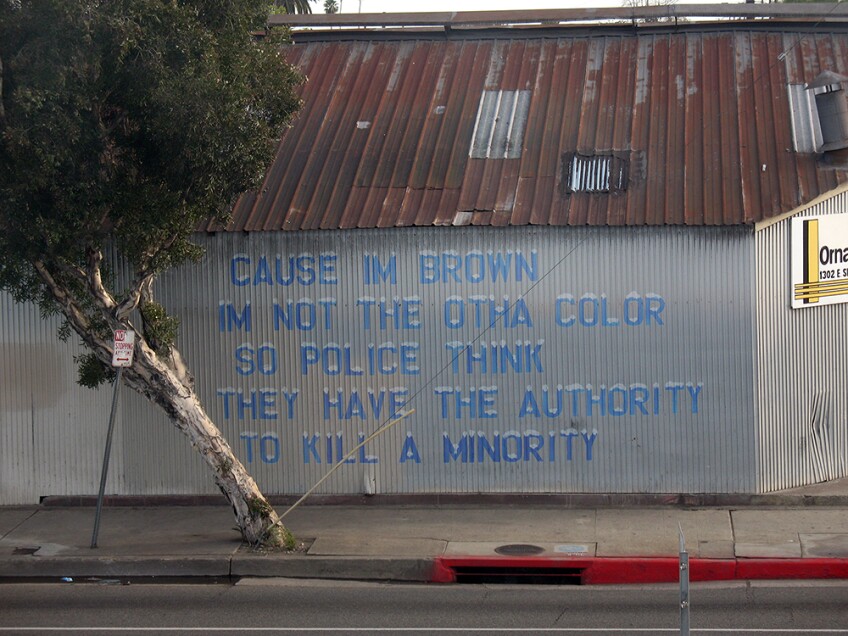
For “Tastemakers & Earthshakers: Notes from Los Angeles Youth Culture, 1943–2016” at the Vincent Price Museum of Art, the multimedia artist Juan Capistran revisits these important moments in L.A. history. Recreating his 2009 mural “NWA (Brothers Gonna Work it Out)” directly onto the gallery wall, the snowcapped blue lettering spells out an altered portion of Ice Cube’s testimony from “Fuck tha Police”: “Cause I’m brown/I’m not the otha color/So police think/They have the authority/To kill a minority.” Capistran originally painted the lyrics on the side of a warehouse in South Central Los Angeles, a neighborhood where the artist grew up, as a direct reaction to anti-immigrant rhetoric and legislation of the early 2000s. For Capistran, the descriptor of “brown” in Ice Cube’s lyric is significant for the way it broadens the black experience of state-sanctioned violence as one that also encompasses the experiences of Latinos and Latin American immigrants. In fact, the mural is just one piece from a series of artworks that addresses U.S. immigration politics of the time. So, it may be no surprise to learn that the mural’s icy font is not only a symbolic reference to the NWA rapper, but is also an allusion to the U.S. Immigration and Customs Enforcement, aka ICE, which was formed in 2003 during the increase of tightened national and border security. Given the mural’s historical context and specific music references, which also includes the 1973 Willie Hutch and 1990 Public Enemy singles “Brother’s/Brothers Gonna Work it Out,” Capistran’s mural could be understood as a cross-racial call for unity and a call to action against the violence of law enforcement.
The artwork’s message is further pushed within the VPAM exhibition by its bookend location in a section that contains the work of other artists who also contend with police brutality. Standout works include pieces from Patrick Martinez’s Peechee folder series. The artist’s “Po-lice 4” (2015) contains a portrait of Michael Brown, the teenager who was killed by the Ferguson, Missouri police officer Darren Wilson in 2014. Martinez’s other painting, “Vintage Throwback Po-lice” (2016), contains a portrait of Ruben Salazar, the KMEX-TV news director and former Los Angeles Times columnist who was shot and killed with a tear gas canister fired by a Sherrif’s deputy during the 1970 Chicano Moratorium. Within this same painting is also a sketch of the videotaped King beating with the victim’s infamous plea for peace during the riots scrawled above his uniformed attackers.

Easy to miss largely due to its high display on the gallery wall is another Capistran piece. The painting, “Sunday, March 3, 1991” (Rodney) (2012) simply comprises the date of King’s attack. This date painting is one of several from an ambitious collection of photos, prints, paintings, and installations known as “From a Whisper to a Scream... Burn This Mother Down!” (2012) that commemorates the 20th anniversary of the 1992 L.A. riots. For the series, the artist made multiple references to black and brown experiences surrounding the civil unrest. These include other date paintings that mark the killing of the black teenager Latasha Harlins by a Korean liquor store owner, which occurred just two weeks after the King beating, as well as the attack of the Guatemalan immigrant Felix Lopez by the same assailants who beat the white truck driver Reginald Denny on the first day of the civil disturbance. For all the date paintings, the artist used a wash that contains a mixture of his blood, sweat, and tears. Indeed, the 1992 L.A. riots and the events that led up to it have left an indelible mark upon Capistran. The bodily fluids are an expression of the sorrow these memories incite and the minimalistic rendering of the date paintings are a metaphor for the physical obliteration caused by the violence and death.
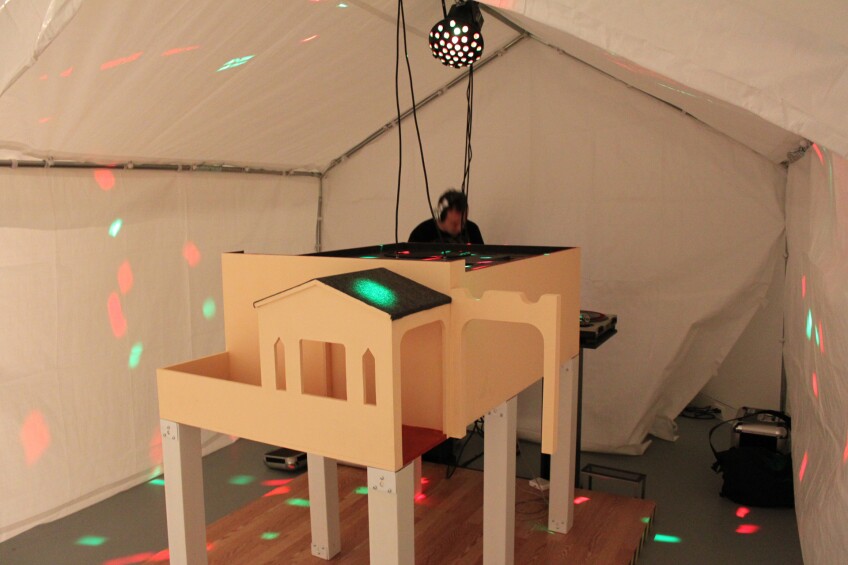
A third art piece by Capistran is included at “Tastemakers & Earthshakers.” The installation, “This Machine Kills Fascists or Labor Sets You Free (Love is the Message)” (2010) more directly than his other works addresses the exhibition theme of youth culture with its heavy rumination on the artist’s youth and the resonance of a music subculture. The work comprises a large white canopy that houses a model of the artist’s childhood home, which is set upon a dancefloor. The model home emits a pre-recorded deejay mix of disco, funk, and proto-house music as colorful lights dance across the white walls of the tent. The conceptual installation explores the evolution of electronic dance music from the mid-1970s to the early 1990s and the transnational history of the underground house music scene. It also explores the artist’s own experience of backyard parties. In fact, when Capistran was a teenager, he attended a rave in the exposed basement of a building near his home that was burnt down during the riots. The event made him realize at a young age how subcultural practices could transform space and create transformative experiences.
“Tastemakers & Earthshakers” includes work by Capistran that highlights the shared experiences of black and brown peoples by reimagining music references and remembering L.A. history. From his use of Ice Cube’s lyrics to his references to the police beating of King and the subsequent civil unrest, he pushes these experiences to the forefront of his artistic practice and demonstrates their continued resonance within U.S. popular culture and beyond.
